Cultivars of maples ........................................ Japanese
In Japan maples are loved widely as a foliage plant and have many cultivars (cultivated or improved species) of their own. One hundred forms are explained in "Chikin-sho" in the Tokugawa period (1603-1867)and 202 forms are in "Shina-Binran" in the15th year of Meiji(1882). (quoted from " Genshoku Nihon Shokubutsu Zukan" by Kitamura, Murata)
There are numerous kinds of cultivars explained in "Great Illustrated Book of Trees" by Uehara Keiji. For the gardening guide-books on cultivars, "NHK Gardening of Taste: Momiji" by Mega Kaneo and "Asahi Gardening Encyclopedia No.14" by Asahi Shimbun. These are easy for us to read. Besides, there are numerous articles and minute pictures in "Japanese Maples" by J. D. Vertrees, Timber Press.
Here is described an article at the section of "the history of Japanese flowers" in "Hana to Ki no Bunkashi" by Nakao Sasuke, Iwanami New Books, as follows:
" The improvement of maples is excellent in the deciduous trees. In Japan there are many kinds of trees which turn red, it seems to be only maples that have been made into so many kinds of cultivars by not the crossing but the cultivating. The cultivar forms of Japanese maples strangely have been taken from many species, for example, Acer japonicum, Acer sieboldianum, Acer tenuifolium, Acer pictum (Acer mono), Acer rufinerve, Acer crataegifolium and Acer palmatum, and from these species about 200 forms of cultuvars have been selected.
Most of them have been selected from the branch-variations and not from the artificial crossing or the hybridizing in Japan, where the branch-variations mean "the variation of the twigs of the branch, a part of a tree or trees", these phenomenon happen and occur by "not the artificial, but the natural variation or the natural mutation". And such twigs were cut and grafted and new cutivars have been made.
Since the Genroku period (from the mid-17th C. to the early18th C.) these forms of maples have been distinguished and the count of forms kept on increasing after the Genroku of the Edo era (1603-1867), and they have been conserved well till the Meiji (1867-1912), the Taisho (1912-1926) and the Showa era (1926-1989)." (my translation)The cultivars of maples show a characteristic delicate elegance which isn't found in the natural original species except a part, and they seem to be loved as garden trees or Bonsai not only in Japan but also in foreign countries. They can be frequently seen in Europe and America published as Japanese maples in the illustrated books of flora and in articles on internet. The characters of the cultivars are mentioned as follows:
The change of the shape or the color of a leaf and leaflets, such as narrow leaflets, curly leaf, leaf with spots and speckles, whitish colored leaf because of the decrease of chlorophyll, the vivid colors at the germination period, red colored leaves all year round, etc.
There seems an inclination that even though we sow the seed of the new cultivars, they will return to their ancestor, that is to say, its original natural species.
In this field, Japan had the best skills and traditions in the world before.A brief classifying cultivars by Mega Kaneo is shown as follows: (quoted from "NHK Shumi no Engei Momiji" : p136-140)
Trident maple series: To-kaede, Goshiki-kaede, Nusatoriyama, Musashi, Miyasama-kaede, Mino-yatsufusa, Naruto-kaede
Striped-maple series: Fuiri-meurinoki, Hatsuyuki-kaede
Negundo-maple series: Oh-han-negundo, Oyo-negund, Hakuhan-negundo
Itaya-kaede(A.mono)series: Tokiwa-kaede, Hoshiyadori
Fullmoon maple series: Itaya, Maikujaku, Kujaku-nishiki, Ohgon-itaya, Mikasa-nishiki
Japanese maple series ( Iroha-momiji,Yama-momiji,Oh-momiji ) :
Yama-momiji, Sangokaku, Katsura, Aoyagi, Chishio, Seigai, Seigen, Shishigashira, Tsuchigumo, Okusimo, Ao-shichigosan(shimenouchi), Kotonoito, Ogi-nagashi, Seiryu, Hagoromo, koshimino, O-sakazuki, Tsumagaki, Shigitatsusawa, Komon-nishiki, Nishikigasane, Asahitsuru, Kagiri-nishiki, Higasayama, Kotohime, Yatsufusa, Kasen-nishiki, Masukagami, Okina, Sodenouchi, Nomura, Shojo, Taimin, Oshu-beni, Chitoseyama, Iijimasunago, Nomura-shidare, Beni-shidare (Tamukeyama), Ao-shidare, Toyama-nishiki
The names are too numerous to mention, but some more are
Shika-momiji, Tatsutagawa, Shigarami, Asagiri, Arashiyama, Kayoi, Meigetsu, Shigureyama, Tsuten, Yashio, Asukagawa, Kara-nishiki, Yugiri, etc.
These names seem to have been derived from the poems in Manyo-shu, Kokin-shu etc.
Here, the meaning of "nishiki" seems to indicate spots and speckles in the leaves.
Cultivars are used for garden trees, so I will show you some pictures of them.
Firstly, let me show you 6 cultivars of Tohkaede (Acer buergerianum) and others.
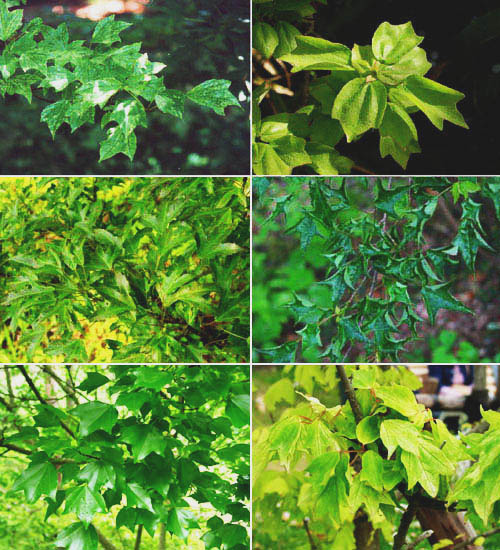
|
(Musashi-Shinrin Park) |
|
|
(Hamamatsu Flower Park) |
(Hamamatsu Flower Park) |
|
(Hamamatsu-Flower Park) |
(Hamamatsu-Hanahaku) |
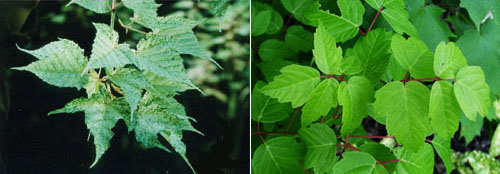
|
|
|
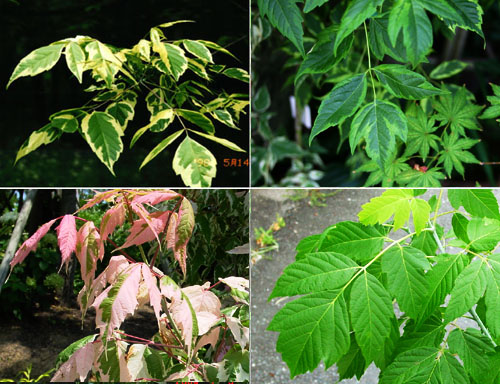
|
|
|
|
|
|
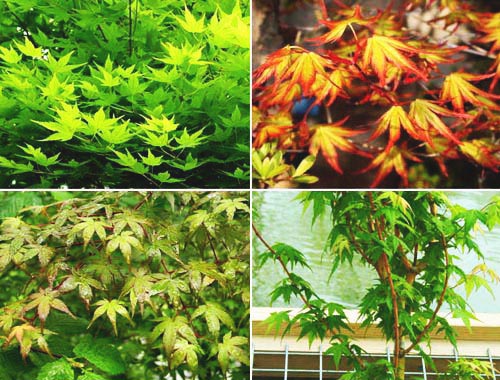
|
|
|
|
|
|
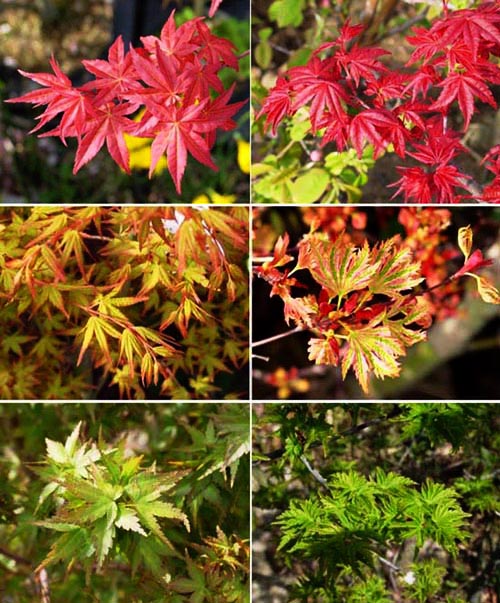
|
|
|
|
|
|
|
|
|
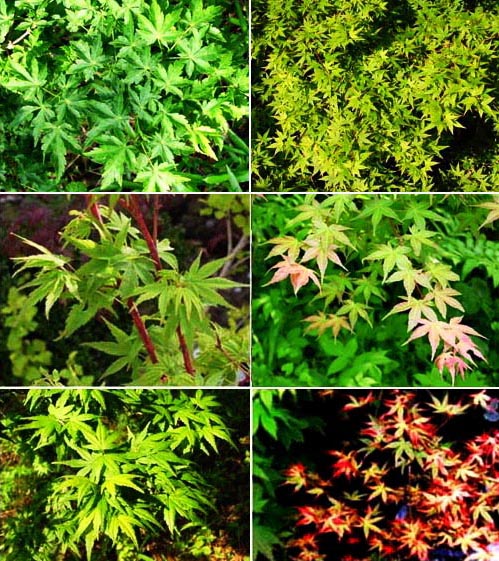
|
|
|
|
|
|
|
|
|
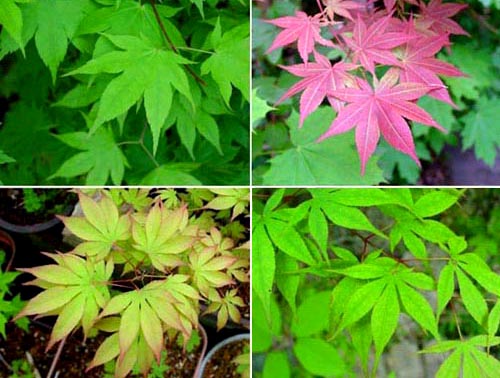

|
|
|
|
|
|
|
|
|
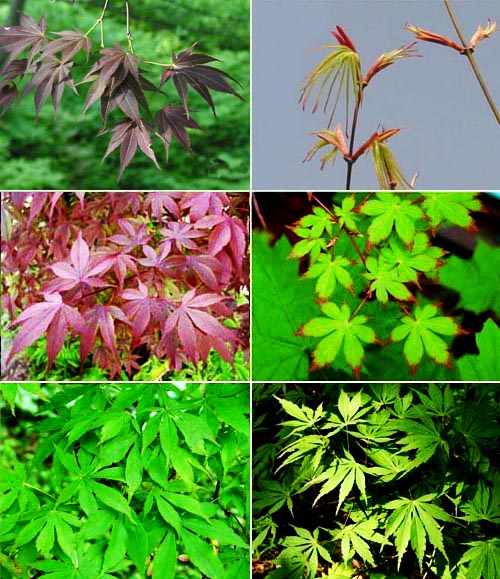
|
|
|
|
|
|
|
|
|
|
|
|
|
|
|
|
|
|
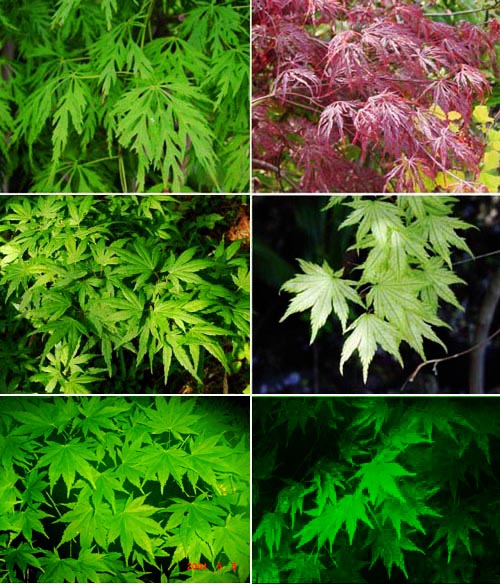
|
|
|
|
|
|
|
|
|